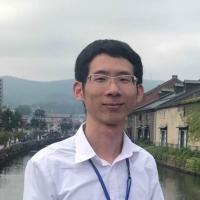Lingcao Huang works with Kevin Schaefer, Kristy Tiampo, and Michael Willis on a project using machine learning to automatically quantify the development of retrogressive thaw slumps (RTS) whose formation is due to the thawing the ice-rich permafrost. Retrogressive thaw slumps are the most dynamic landforms in cold regions and in which thaw of ice-rich permafrost on slopes causes mass-wasting of soil and vegetation. As reported by many local studies, their number and affected areas have increased dramatically in recent decades. However, their spatial distribution as well as development are poorly quantified and understood because they are widespread but localized features. By applying machine learning technology, especially, deep learning, Lingcao will develop a method to delineate and quantify RTS occurrence and dynamics in northern Alaska. The objectives are to provide a tool to monitor RTS dynamics in larger areas and also advance the understanding of permafrost degradation in northern Alaska related to external controlling factors such as climatic variables.
